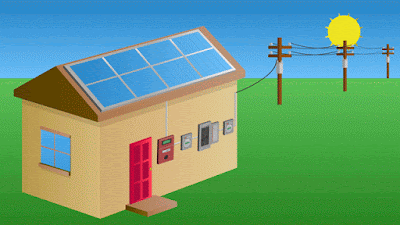The Need for Grid Access
Over the years
with the increase in population, the demand and needs for electrical energy has
also seen an exponential growth. Since electrical power is constantly used in the daily lives of citizens, without it, life as we know it will not exist.
In order to get electricity to our jobs and homes the
electricity grid is used. The electricity grid is an electrical power system
network made up of the electricity generating plant, the transmission lines,
the substations, transformers, the distribution lines and the consumers. In
Trinidad and Tobago, we have an interconnected national grid system which
transports the electricity from the power plant to the consumers and is totally
controlled by the Trinidad and Tobago Electricity Commission (T&TEC).
T&TEC purchases electricity from independent power generators and then
sells it to consumers at commercial or residential rates. It is illegal to
access the electricity grid without obtaining necessary permissions from
T&TEC, whether it be to send power into the grid or take power from it.
One major barrier which affects the development of renewable
energy systems in Trinidad and Tobago is the high cost of these systems. A high
cost comes from storing unused power generated by the systems in batteries.
Renewable energy sources are also unpredictable and vary throughout each day,
for example, wind power is only generated when the winds are blowing and solar
power is only generated during the day and not during the night when there is
no sunlight. Due to the sporadic nature of these sources of power, it is
challenging to connect solar or wind power plants to the electrical grid
system. Electricity generated by natural gas power plants are consistent and
never increases or decreases unless the demand for power increases or decreases,
meaning it provides exactly what is needed at all times. Solar and wind power
plants can suddenly reduce or stop producing power due to natural weather
conditions, thus creating a problem if the demand for electricity is not met.
Connecting household or small renewable energy systems to
the electricity grid can solve the problem of high cost as the power not used
by these systems can be fed into the grid to eliminate the use of battery
storage. However, in Trinidad and Tobago it is not possible to connect to the
grid, so persons must invest in batteries if they choose to install these
systems. If grid access is allowed then more people can install renewable
energy systems which will decrease the amount of power needed to be produced by
the natural gas power plants.
 |
| Animation of solar panels sending electricity to the grid |
To prevent the problem of the irregular amounts of power
generated by renewable energy systems, these systems are rated to the lowest
possible amount of power and not an average or the maximum possible power
output. This then guarantees at least the rated amount but can still generate
excess power. This means that less power
is needed from the natural gas plants at the times the systems produce more
than the rated amounts.
Accessing the grid would signal an introduction to ‘net
metering’ which is how T&TEC would pay for the excess power fed into the
grid by the personally owned systems. T&TEC would pay for the power
supplied to the grid and when the system stops producing power, the consumer
will then pay T&TEC for electricity consumed from the grid.
Net metering and grid access is a growing trend throughout
the world with many nations benefitting from not having to purchase excessive
amounts fossil fuels to produce electricity and help curb global warming by reducing
carbon emissions. The examples to follow are clear to see, so why does Trinidad
and Tobago continue to resist the implementation and integration of renewables
into the electrical grid?
Written by: Andrew Bisnath





Comments
Post a Comment